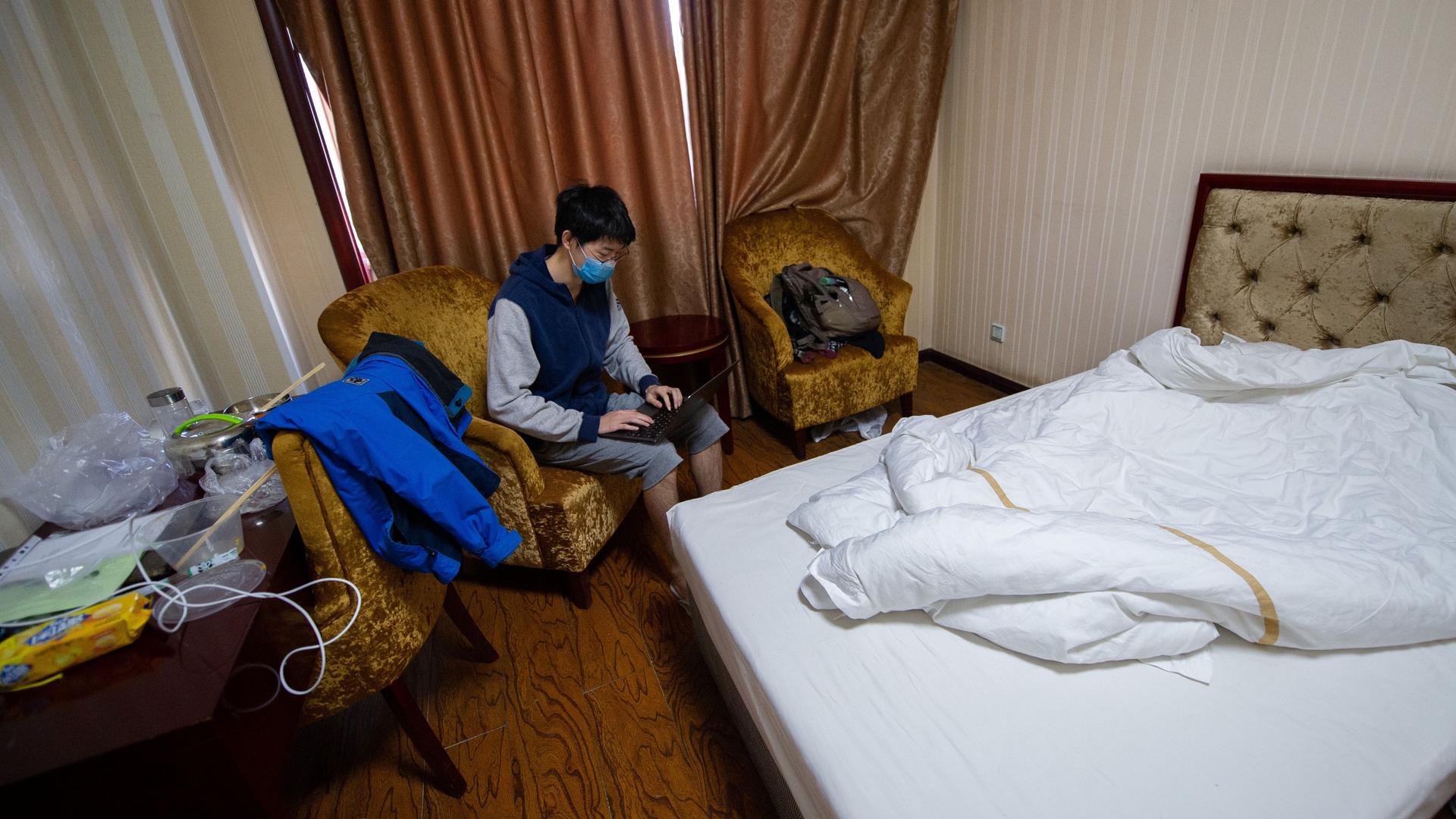Over the last few weeks, as universities responded to COVID-19, international students had to make quick decisions that may have consequences for years to come.
Some have had to find new housing as colleges shut down dormitories. Others have taken a chance on leaving to be with their families in their home countries. As spring break ends, and for many, classes begin online next week, there may be a new set of headaches.
“Everything changed. I felt there [were] only bad choices. All the international students didn’t know what to do. Suddenly, all of the people were considering their option, like, ‘Should I go? Should I stay? The borders are closing. We don’t know what’s happening.’”
“Everything changed. I felt there were only bad choices,” said Israeli graduate student Batsheva Baraban, who is part of a close-knit community of international students at Harvard University’s Graduate School of Education. “All the international students didn’t know what to do. Suddenly, all of the people were considering their options, like, ‘Should I go? Should I stay? The borders are closing. We don’t know what’s happening.’”
Related: As Spaniards flee cities, the countryside fears coronavirus
Baraban chose to go to Singapore where her husband is living. She said she was on the last flight into that country before its airport closed. She doesn’t have much with her.
“I feel like a refugee,” she said.
At Kansas State University, Indian student Vedant Kulkarni decided to stay on a campus that now seems like a ghost town.
“I see all these local American students, they are putting all these stories [online] about how staying with their families is driving them crazy and whatnot, and I’m just like, ‘Dude, you have some family support. Imagine [what it’s like] for students who are from halfway across the world.’”
“I see all these local American students, they are putting all these stories [online] about how staying with their families is driving them crazy and whatnot, and I’m just like, ‘Dude, you have some family support. Imagine [what it’s like] for students who are from halfway across the world,’” he said.
Kulkarni is anxious about classes starting, as Kansas State, like most colleges, shifts to teaching online.
“It’s been a bit of a chaos because of all the emails that all professors are sending and the different requirements each professor has [for] their online classes,” he said.
Kulkarni could’ve had a much bigger problem: His international student visa usually doesn’t allow more than one class online. Rachel Banks, director of Public Policy for NAFSA: Association of International Educators, said that was a widespread concern among students and administrators.
Related: Pandemic threatens stability, demands ‘coordinated global action,’ says Susan Rice
“Recognizing that their schools were going to be all courses online, would that put them out of status? Would they be in violation of their status if they had to be taking all their classes online?” Banks said.
Earlier this month, NAFSA put those questions to the Department of Homeland Security. DHS said they would temporarily change the visa rules so that international students could continue all their classes online. The move was hailed by the Presidents’ Alliance on Higher Education and Immigration.
“But then another issue of confusion came up when there was the question of, well, what happens if international students go back home while they’re taking online classes?” said the alliance’s executive director, Miriam Feldblum.
So, DHS addressed that, too. They said that temporarily, international students could go back home, take online classes and keep their US visas.
Some students may still face practical problems, like a lack of internet access in their home countries. A third of international students in the US are Chinese, at nearly 400,000, and those who return to China may have their American online classes blocked by China’s censors.
“It’s harder to get onto American websites when I’m in China, especially a lot of schools are using like, for example, school emails are all like Google, Gmail, [and] we can’t really use Gmail in China,” said Tony Zhu, a graduate student at New York University who said he would have to set up a virtual private network, or VPN, to get around Chinese internet censors.
Related: 5 museums offering virtual art while you’re quarantined
Administrators across the US are trying to find a way to deal with the problem, but they haven’t had much time to work on it. Zhu chose to stay in the US to make things easier. But he’s skeptical about all the plans for online learning.
“Let’s be honest, no one really pays attention to online classes. You don’t feel the need to actually listen or focus because the professor can’t really see you.”
“Let’s be honest, no one really pays attention to online classes,” Zhu said. “You don’t feel the need to actually listen or focus because the professor can’t really see you.”
He said everyone he knows plays games during online classes.
In Singapore, Baraban has the opposite problem.
“My schedule here will be upside down,” she said. “I will have to be awake at night and sleep during the days in order to attend classes.”
Related: African countries restrict travel in bid to slow spread of coronavirus
Some lectures will be recorded and can be watched later, but Baraban’s classes are interactive, where students make presentations and talk in small groups.
“So, if I want to feel at least that I’m in some way participating and gaining something from the classes, I have to do them live,” Baraban said.
She’ll make it work because she has to, Baraban said — the hard part is not knowing when all of this will end.
